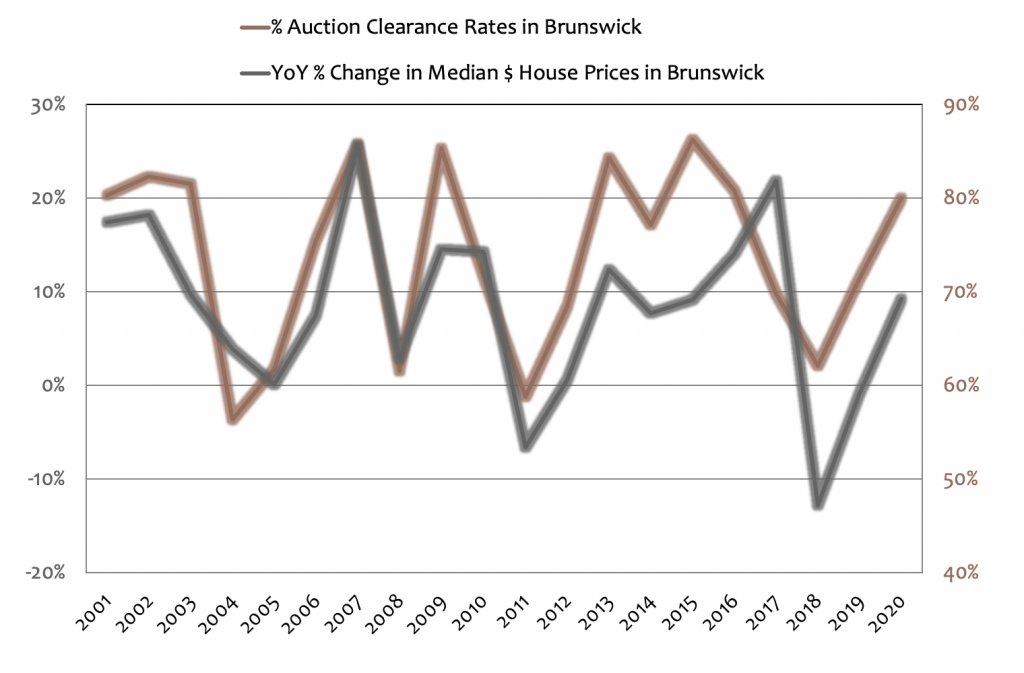
Everyone is obsessed with Auction Clearance Rates in Melbourne!
Week after week, we have the media, real estate agents, and bodies like the REIV lining up to give us the stats.
You know how it goes. It’s “X% success from Y auctions” and “This week’s clearance rate of A% is B% higher than last week, month, or year”.
It all gets pretty tedious. But maybe there’s a reason why so many professionals focus intently on auction trends…
So, is it all just noise or is there something to clearance rates after all?
Well, you’ve already read the headline.
As you’re trusted property investment consultants in Melbourne, we’re going to tell you why auction clearance rates are important, but also what you can and can’t read into clearance rate statistics.
The Obsession with Clearance Rates Explained
If there’s one group of people who love crunching numbers, it’s real estate professionals.
Specifically, it’s commentators and data analysts in the real estate industry.
But the data that everyone wants – specifically house price data – comes with a lag. Commentators can’t provide meaningful weekly data about Median $ House Prices, but they can tell you about Auction % Clearance Rates.
And the thing is, clearance rates can tell you about property market performance and the direction house prices might be going, especially in cities like Melbourne and Sydney.
The Auction Clearance Rate is a percentage figure that tells you the proportion of properties that successfully sold at auction (although this definition can get fuzzy, as we’ll discuss later).
A high clearance rate (around 75%) may indicate strong market conditions, high demand for real estate, and rising property prices. When auction clearance rates are consistently around 75-80% you’re probably in a seller’s market.
A low clearance rate (around 60%) may indicate a sluggish real estate market, less demand for property, and the chance of dipping real estate prices. When properties consistently fail to sell at auction in the Melbourne market, you may be in a buyer’s market.
Auction Clearance Rates Indicate the Health of the Property Market
Brunswick is a suburb in Melbourne’s north that is, in many ways, representative of the broader Melbourne market. For the purposes of explaining the relationship between Auction Clearance Rates and Median $ Price Growth, we’ve looked at the sales history of Brunswick Houses since the turn of the century.
Over the last 17 years, Auction Clearance Rates for Brunswick Houses have averaged just under 79%. Median $ House Prices have increased every year but one (in 2011).
Looking at the graph below, we can see that auctions and prices are very tightly correlated.

When Auction Clearance Rates are below average or declining, Year-on-Year (YoY) Median $ Price Growth is below average (9%) or trending downwards.
Said simply, this graph shows that auction clearance rates and house prices are moving in the same direction 72% of the time. Now that’s a correlation to pay attention to!
Auction Sales Lead to Higher Median Prices
The correlation between auction clearance rates and median house prices should be of no surprise to those who understand how auctions work.
Vendors determine the reserve price, effectively saying “I’m willing to sell at this price”.
The reserve price is arrived at by assessing market conditions, nearby comparable sales, and buyer interest over the course of the campaign. If proper analyses and professional advice are applied, the reserve price should be a reasonable estimation of market value.
When bidding at auction exceeds the reserve price, two things happen. The property inevitably sells, which increases the weekend’s auction clearance rates, and a new, more accurate market value is achieved.
So, higher clearance rates indicate that plenty of properties are selling above the reserve price.
Put enough sale prices together and you get a Higher Median $ Price for an area. When lots of properties are sold above reserve at auction, the Median $ Prices should rise.
The underbidders for each property will move on to other properties, and their assessment of market values will change based on recent results, leading them to bid higher next time!
So, high Auction Clearance Rates effectively act to stimulate the market by increasing vendor and buyer expectations. The opposite occurs with less auction success.
The Market Tends to Cool When More Properties Pass In
If only one or two parties are seriously interested in purchasing a property, then that auction rarely gets off the ground. In this scenario, the vendor’s reserve price is not met, and they have some serious decisions to make:
- Negotiate immediately with interested parties
- Move into a private sale campaign with a fixed price after already spending 6-8 weeks on the auction market
- Pull the property from the market entirely.
For options 1 and 2, the vendor has lost the leverage and prospective buyers are more likely to assess the property logically, with far less emotion clouding their offers. The ultimate sale price will almost certainly be below the initial reserve (read this article for more on bidding at auction and when a property is passed in).
If the vendor chooses option 3 and delists the property, then a clear message has been sent to the market that sale price expectations were too high. Whether consciously or not, active buyers will take that message on board and will proceed with more caution when considering other properties.
What Else Can Affect Auction Clearance Rates?

Weekly clearance rate data does not make a trend, especially when that data is being affected by outside forces. When looking at auction clearance rates on a weekly basis, keep the following in mind:
- Weekly clearance rate data can be delayed, meaning clearance rate results may not be accurate
- Properties that are withdrawn from sale are sometimes erroneously counted in the clearance rate data
- Sometimes, clearance rate data also includes properties that are sold before or after the auction, which muddies the water and inflates the data.
- A range of other factors may also be at play, from interest rates to the number of competing auctions running simultaneously. Weather, major sporting events, and holidays can also impact auction clearance rates.
Other Limitations and Additional Auction Data to Consider
- The Melbourne Effect: Melbourne is known as the auction capital of Australia – and even the world. Outside capital cities and major centres like Melbourne and Sydney, the low levels of property auctions mean that Auction Clearance Rates are less statistically significant.
- Property Type: When looking at clearance data, you also need to consider the types of property that are being auctioned. If it’s mainly inner city houses, house prices may be higher independent of clearance rates. If it’s mainly luxury properties, the clearance rates may be lower because luxury properties have fewer potential buyers and can be harder to sell.
- Definitions and Reporting: As discussed above, the exact definition of a property that sells at auction will vary across the real estate industry, and some agents will be selective or late with the data they provide. This can impact the reliability of Auction Clearance Rate data.
Alongside Auction Clearance Rate data, some additional metrics to consider include:
- Average days on market for properties sold at auction
- Number of properties sold prior to auction (as a percentage)
- How many auctions started with a vendor bid
- The average number of active bidders per auction
- Number of properties sold above reserve
Overwhelmingly, Prices Grow Most When Auction Clearance Rates Are High
Auction clearance rates aren’t the be-all and end-all, but the data is clear.
When house prices are rising more than usual, auction clearance rates are typically above average. Conversely, when prices are rising less than usual, auction clearance rates tend to be lower than average.
And it’s not just in Brunswick either. Across Melbourne, auction clearance rates have consistently been in the high 70s, and when they are higher than the same point in previous years, we see strong buyer demand from multiple bidders at auction. We’re yet to see a turn in that trend, but as the above analyses prove, it’s important to keep monitoring.
Alongside other data points, auction clearance rates can also give you insights into:
- The current state of the property market.
- The current state of the job market.
- General consumer confidence.
- The best times to buy or sell.
- Whether you should buy/sell or hold.
- The current lending behaviours of the big banks (availability of credit).
- And more!
Understanding Auction Clearance Rates can help you get on the front foot with emerging trends. Whether you need a buyers advocate in Kew East or buyers agents in Templestowe Lower, Property Analytics can crunch all the numbers to help you make high-value investment decisions.

